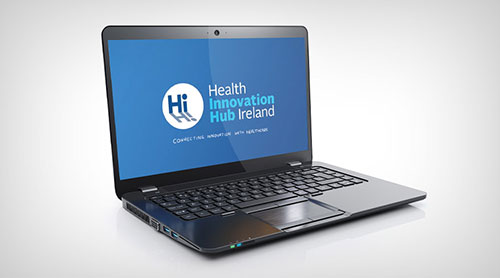
St James’ Hospital recruits patients with TB for Video Direct Observational Therapy study to investigate smartphone versus community care, in an Irish research first
A Health Innovation Hub Ireland (HIHI) pilot study with St James’ Hospital will investigate the benefits of using technology against in person care in Tuberculosis (TB) medication adherence. In both the United Kingdom and the United States, the standard of care to ensure TB medication compliance is Video Direct Observational Therapy (VDOTS). The patient records a video ingesting medication remotely and submits securely via software to the TB nurse. Currently in Ireland, a community nurse physically visits a patient with TB medication adherence, watches each take their medication and records it manually on a hard copy – this is Direct Observational Therapy (DOT).
The public health nurse visits a patient’s home either once or twice a day, within the traditional DOT system for TB medication adherence,in use across Ireland depending on the treatment plan. By contrast, VDOTS uses a mobile smartphone application that allows patients to remotely record and send videos of every medication dose ingested. The nurse then views the date and time stamped videos on a secure web-based client management system (CMS) that is password protected. Once a patient’s videos are uploaded to the web portal, they are automatically deleted from the smartphone.
In 2018 in Ireland, there were 315 cases of TB notified with 38.4 per cent of total cases reported in Dublin. St James’ TB Clinical Nurse Specialist, Loraine Dolan approached HIHI to support the pilot study. The pilot will run for up to 18 months and test if VDOTS is superior to DOTS in recording doses of TB treatment that up to 40 Irish patients receive. The study will assess patient quality of life, cost effectiveness and resource efficiencies e.g. hours saved. A similar UK study, published in The Lancet last year, found that the costs of providing DOT over six months were estimated at £5,700 per patient for observations five times per week and £3,420 for observations three times per week. For daily VOT over 6 months, costs were estimated at £1645 per patient.
Mary Day CEO St James’ Hospital said:
“As Irelands’ largest hospital, St James is committed to realising the full value of health technology and remote care to reduce the burden on the acute setting, achieve cost savings and empower our patients as active participants in their own care. We need this now more than ever.
“This HIHI/St James’ pilot has been driven by ingenuity on the frontline through Lorraine, with the invaluable support of Health Innovation Hub Ireland whose Dublin office is based here in St James Hospital.”
Eimear Galvin, HIHI TCD Manager said:
“Part of the HIHI national network is based in St James hospital, so we are very pleased to support this study and to have secured the software at no cost to the health service for the pilot duration.
“The need for remote care and patient management that technology such as this delivers is even more urgent now since Covid-19. As a leader in digital health in Ireland, St James’ is the ideal site to test VDOT.”
Lorraine Dolan TB Nurse Specialist and study PI said:
“TB is a curable disease; however duration of treatment is lengthy ranging from six months to two years depending on the type and location of TB. The main aim of DOT is to ensure that patients take their medications each day and most importantly complete the treatment course.
“Although not a complete replacement for DOTs, VDOTS empowers patients who can engage with it, to live their lives normally without constraints and interruption to their working day or home life with a nurse visit. This HIHI/St James study will be the first to offer the VDOTS option to TB patients.”
TB remains a global health threat. In 2018, 1.5 million people died from TB. TB now ranks as the leading cause of death worldwide from an infectious agent, resulting in more deaths than HIV and malaria (WHO, 2019). Globally there were 10 million new cases of TB in 2018. Directly observed treatment (DOT) has been the standard of care for tuberculosis since the early 1990s, but in some cases can be inconvenient for patients and service providers. The use of VDOT has emerged in the last decade with the improvements in technology as an alternative approach in ensuring compliance with TB treatment.
NOTES
HIHI has a remit from the Department of Business, Enterprise and Innovation, and the Department of Health to support business development and positively impact healthcare. HIHI recognises that collaboration with business can benefit patient care, patient pathways and outcomes. The hub’s national network connects innovative healthcare products with people qualified to test them, through usability, pilot and validation studies, supporting the development of new healthcare technologies and exposing the Irish health system to the latest innovative solutions. There are three hubs in the national network – Cork, Galway and Dublin.
St James Hospital TB Centre
Established in St. James’s Hospital in 2004 the TB service comprises a multi-disciplinary team comprising of Consultant Respiratory Physicians, Registrar, TB Clinical Nurse Specialist, Senior Pharmacist, Public Health Doctors and Nurses, and administration staff work together. Their aim is to ensure patients are seen efficiently, receive the appropriate TB investigations and treatment and support the patients to enable completion of treatment. Most patients with TB are treated as an outpatient. In Ireland, there were 315 cases of TB notified in 2018 with 38.4 per cent of total cases reported in Dublin (HSE, Health Protection surveillance Centre).
Lancet Study
Smartphone-enabled video-observed versus directly observed treatment for tuberculosis: a multicentre, analyst-blinded, randomised, controlled superiority trial (VOLUME 393, ISSUE 10177, P1216-1224, MARCH 23, 2019)









